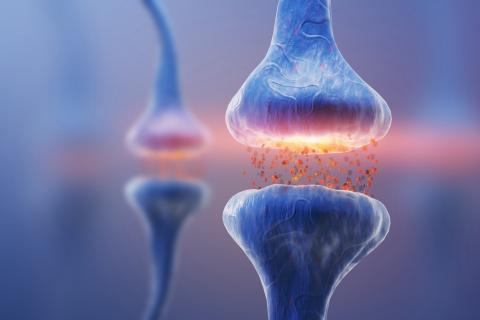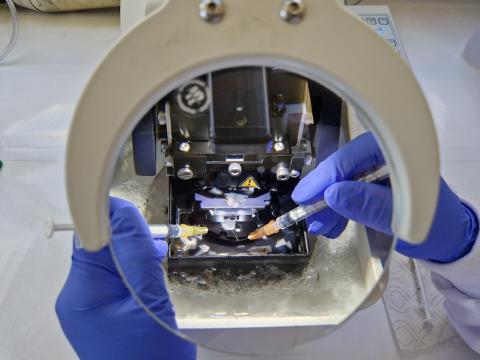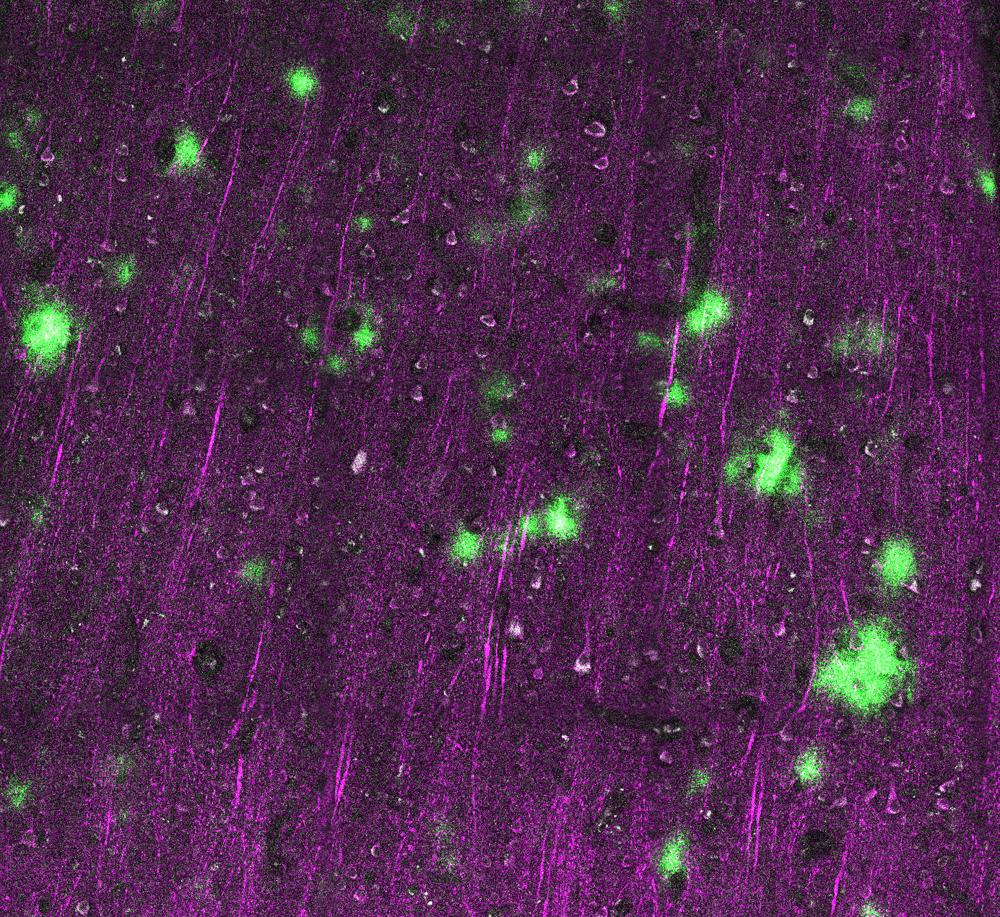Understanding why synapses are damaged in Alzheimer's disease
In Alzheimer’s disease (AD), the loss of synapses, vital communication points between nerve cells, is thought to be the driving force behind memory loss. In AD, and related disorders such as frontotemporal dementia, tau, a normal protein found inside nerve cells, becomes “stickier”, clumping together to eventually form large aggregates called tangles. Aggregated tau can damage synapses but evidence suggests normal tau is also needed to keep synapses healthy. Tau clumping may therefore be a double-edged sword; turning tau toxic whilst simultaneously preventing its normal function.
Using thin slices of brain kept alive in culture dishes, the Durrant Lab are investigating the role of normal tau in keeping synapses healthy and how this changes in AD. These slice cultures, which contain the different cell types and synapses found in an intact brain, allow the team to easily test drugs and examine the sequence of changes in living tissue. This complements work in post-mortem brains, which provide a useful snapshot at the end-stages of the disease. This will aid understanding of what aspects of synapse damage in AD are caused by loss of normal tau function and enable researchers to design and refine therapies that provide the best outcome for synapses.
Latest news



Dr Claire Durrant
Dr Claire Durrant is an Emerging Leader at the UK DRI at Edinburgh. Find out more about her career and expertise on her profile page.

Research summary

A section of human cortical brain tissue, labelled for amyloid beta using MOAB in green and neurons using MAP2 in magenta via immunofluorescence. Dendrites can be seen going up through the layers of the cortex, with the white matter at the bottom of the slice. Credit: Soroya Mefta, Durrant Lab
The role of tau in synapse survival and its relevance to Alzheimer’s disease
Synapse loss is the best correlate of cognitive decline in Alzheimer’s disease (AD), so designing drugs that protect these structures is a key priority. Tau aggregation, likely driven by upstream changes in the amyloid pathway, is thought to be synaptotoxic and so lowering tau is often proposed as a therapeutic strategy. However, although constitutive tau knockout protects against aspects of AD pathology in various models, there is also mounting evidence that tau has important physiological roles at the synapse. This raises the possibility that tau loss-of-function may act alongside tau-toxicity to contribute to synapse damage in AD and related disorders. Tau-targeting therapeutics may therefore require careful optimisation to avoid induction, or worsening, of loss-of-function phenotypes.
Dr Durrant and her team are exploring the role of tau in synapse survival, determining whether tau loss of function plays a role in AD synaptic pathology, and testing potential mechanisms for therapeutic intervention.
Main objectives and research goals:
- To test the hypothesis that reduction of endogenous tau protein results in glutamatergic synapse disruption and alterations in neuronal activity
- To determine whether synaptic disruption in early AD can be partly attributed to loss of physiological tau function
- To rescue synaptic function in AD models by restoring physiological tau or targeting downstream consequences of tau loss-of-function.
Key publications
Vacancies
Lab members
- Dr James Catterson (Postdoctoral Researcher)
- Dr Soraya Meftah (Postdoctoral Researcher)
- Mr Lewis Taylor (PhD Student)
- Dr Robert McGeachan (ECAT PhD Student- jointly with Spires-Jones lab)
- Jamie Elliott (PhD student)
- Danilo Negro (PhD student)
Collaborators



Lab funders
Thank you to all those who support the Durrant Lab!

